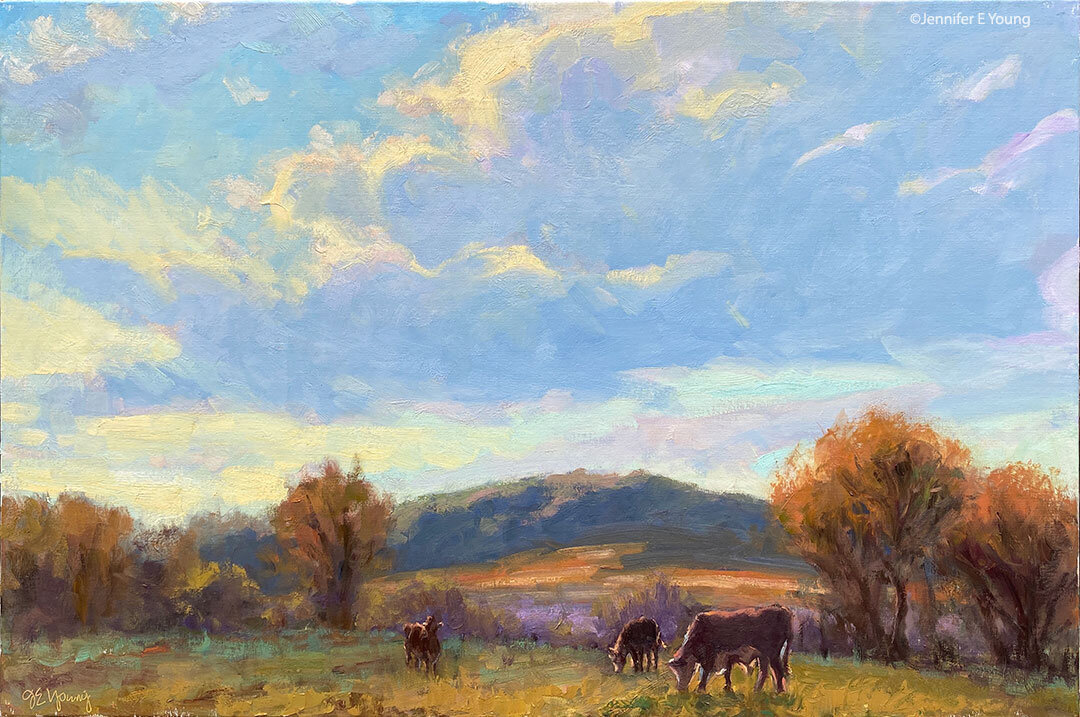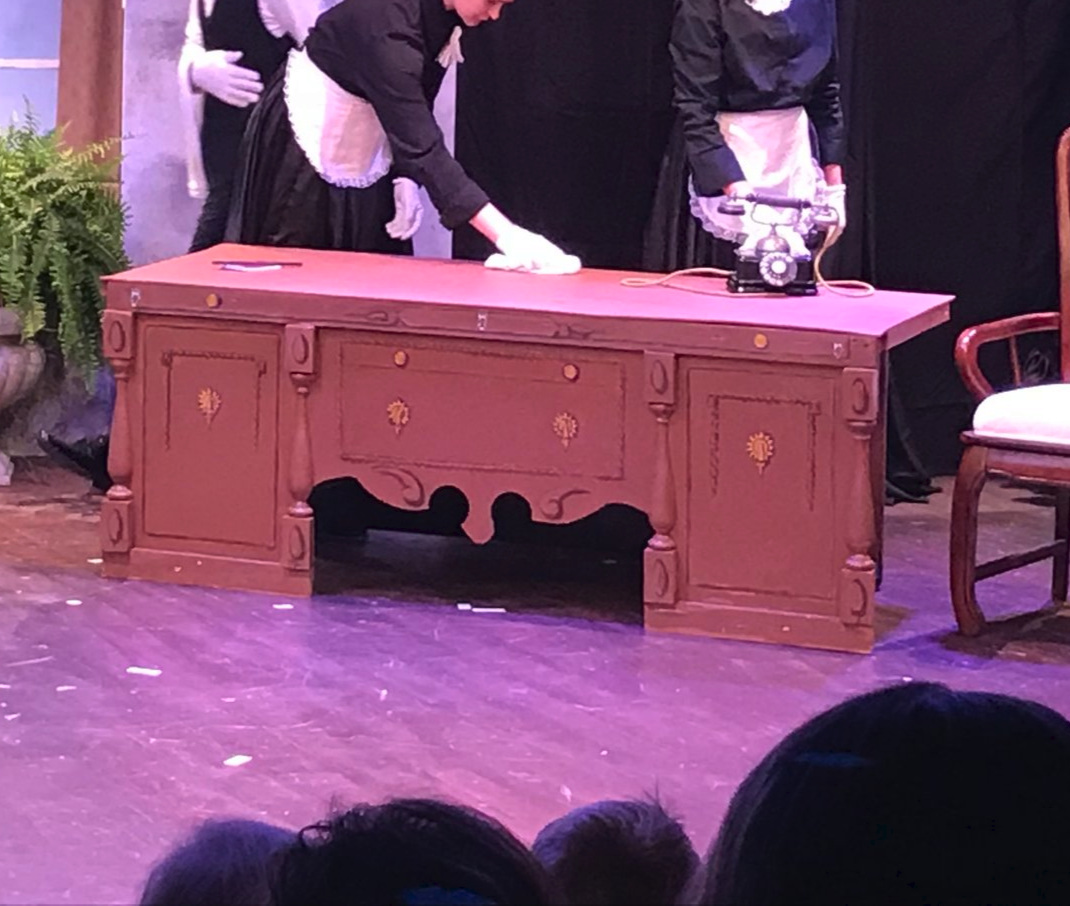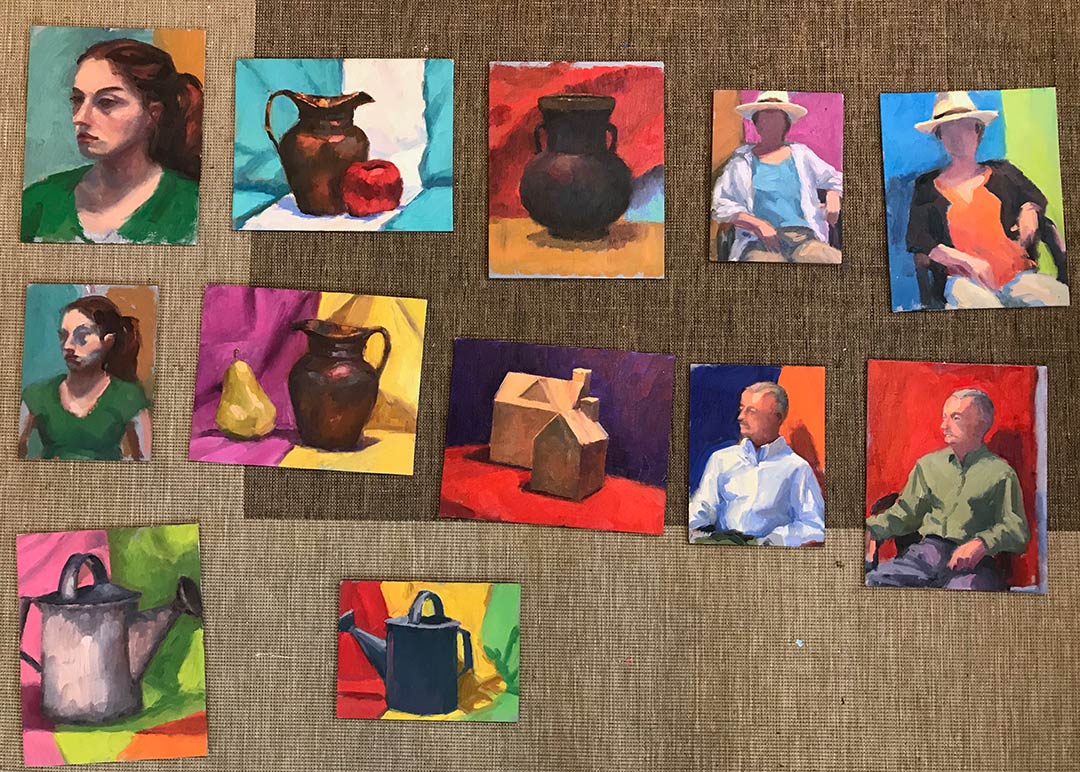Independence Day
/It was hot and humid and overcast. Our baby had been sick part of the week prior and through the long weekend with a 102 degree fever and hand, foot and mouth virus. And to top it all off, we woke up on July 4th sticky and without power from a tremendous summer storm the night before. But believe it or not, I had a great morning, as I was allowed the privilege of escaping getting outside early to do this little plein air painting.

The location is Young's Pond in nearby Bryan Park. I've painted this location before a number of times, and this approximate scene once before, which you can see here. There were a number of nearby spots I could have chosen, but on an overcast day it's nice to paint a water effect, as then you have some luminosity built in, when the light is otherwise fairly flat.
I spent about 3 hours on site working on this piece, which was longer than I normally would do on location. But I think the combination of fairly steady light conditions, and my private glee at having the entire morning completely to myself kept me lingering longer than I would have otherwise.
Here's a shot of my setup right before I started.

Next time I would like to get out even earlier than I did, to try and capture that wonderful atmosphere (aka humidity) before it settles into just plain old hot heavy air. But with a baby, you gotta do what you gotta do, and I was happy to get out at all. My setup has remained pretty consistent over the years, with my Soltek easel still being my go to plein air easel due to the ease of use and quick setup time.
The sun made its appearance often enough that shading myself, my painting, and my palette was a concern. I brought my umbrella with me, but it is a pain to set up and doesn't really work that great with the Soltek (one of the easel's down-sides...I've yet to find a really compatible umbrella that can attach to it without falling over.) So If I can get away without, I usually do. This often means avoiding standing in the blazing sun, even if it means forgoing a preferred view. Otherwise my painting ultimately suffers (not to mention my skin.)
In this photo I've set up my painting panel so that the sun (when it peeks out) is behind it, making it shaded. I am relatively shaded by tree branches overhead. Since I am right-handed, my subject is to my left, so that I am not having to reach across my painting when I look/paint. Often times I can shade my palette simply by wedging another panel between it and my painting. In this case I am using a flat wet panel carrier called the Art Cocoon.
This is actually a pretty neat concept for a wet panel carrier, which I read about some time ago on another artist's blog (when I still had time to read them) owned by Ed Terpening . The advantage is that you can use the carrier for different sized paintings with the provided inserts, and it is nice and lightweight and not bulky. But the down side for me is that it is made out of cardboard, which eventually warps (especially in our hot Virginia climate) and when that happens it stops protecting the painting effectively.
For that reason, my go-to wet panel carrier is still the RayMar. It's a little more expensive, and bulkier, but still lightweight. And its coroplast construction means that while it won't last forever, it lasts a good long time and doesn't warp.



















